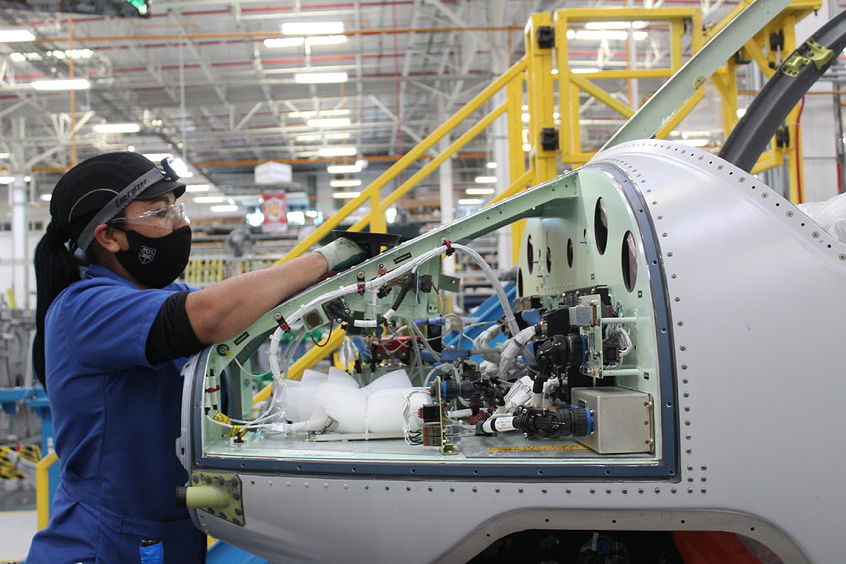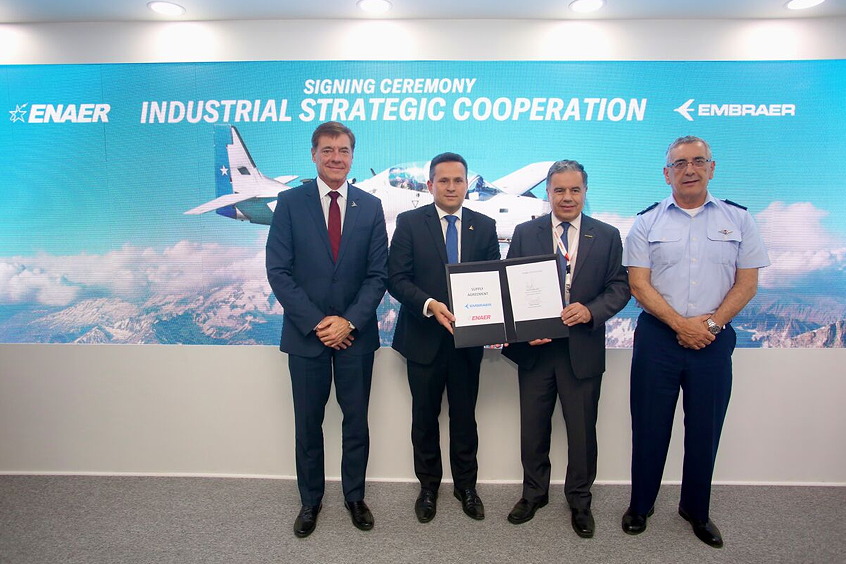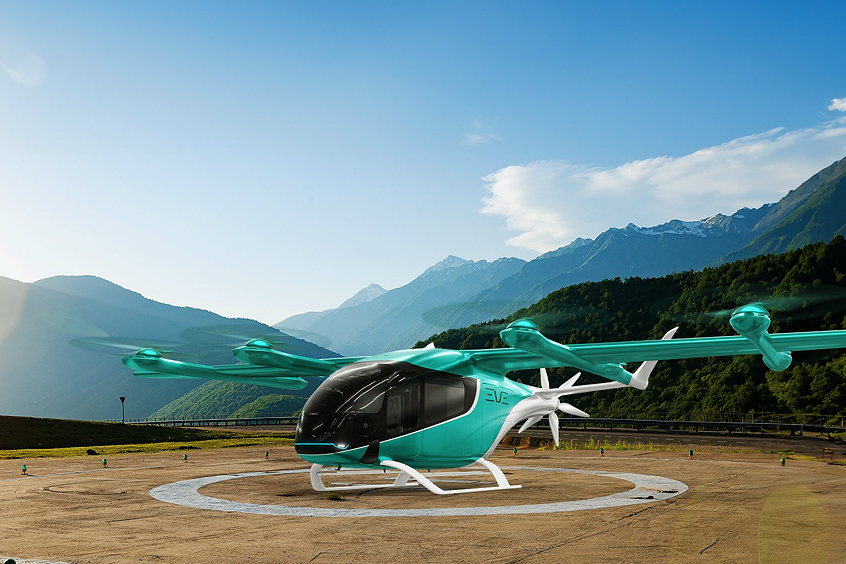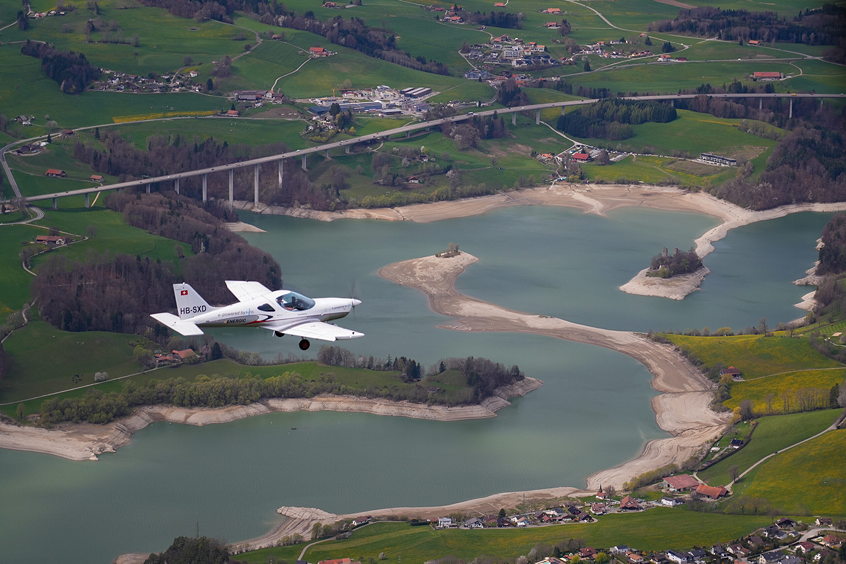In the past four years, first-tier airframe component supplier Moyola Precision Engineering, based in Castledawson, Northern Ireland, has invested £6.5 million in its aerospace division. More than two thirds has been spent on three high-speed, 6-axis machining centres from Dörries Scharmann Technologie (DST), the latest of which was installed in November 2009.
Having an extra CNC axis in addition to the more usual five axes results in significant productivity and cost benefits when machining aircraft structural parts, according to Moyola's Managing Director, Mark Semple.
A major advantage is that deep recesses and other awkward areas on components can be accessed and machined at high speed by short cutters. If the same parts were machined on conventional 5-axis machines, significantly longer tools would be needed for clearance. There would be a consequent risk of chatter adversely affecting surface finish. The likelihood, therefore, is that cutting speeds and feeds would have to be reduced, compromising productivity.
The kinematically driven Sprint Z3 head on the two DST EcoSpeed F2035 machining centres tilts through ± 40 degrees in both the vertical A-axis and horizontal B-axis. This is suitable for a majority of machining tasks.
However, the ability to automatically replace the in-line spindle with a right-angle milling head in under three minutes allows steep angles up to 130 degrees to be achieved. By interpolating the 360-degree C-axis rotation of the head with the X, Y, Z, A and B axes, even difficult-to-reach areas on aircraft parts can be machined easily with short, rigid tooling. The angle head is used to machine 50 per cent of the parts that go through the EcoSpeed F2035s at Moyola.
Irrespective of whether the in-line or right-angle head is in use, full advantage can be taken of the 120 kW / 30,000 rpm spindle on the latest F2035 and of the 80 kW / 30,000 rpm spindle on an otherwise almost identical machine installed in 2005. It is noteworthy that, unlike on many high-speed machining centres, it is not necessary to be operating at maximum rpm to achieve full power, which is available at speeds as low as 13,800 rpm – less than half of full speed.
This added flexibility enables cutting speeds, feeds and depths of cut to be optimised to achieve maximum performance for each cutting tool assembly.
Commented Mr Semple, "We achieve extremely high metal removal rates when roughing as well as good surface finish and high accuracy during finishing cycles.
"In my view, DST's EcoSpeed machines are the best in the world at roughing and finishing of aerospace parts from aluminium billets. The machines are designed and optimised to process aluminium, so all of our titanium and steel components are manufactured on different plant."
"In early trials carried out by various machine suppliers, DST produced in 2.05 hours an Airbus A320 wing rib that used to take us 9.5 hours on one of our 5-axis machining centres. The next quickest machine from another potential supplier took over four hours to complete the part.
"To really appreciate the speed of EcoSpeed machines, you have to see them in action or look at a video. They generate such large volumes of aluminium chips so quickly that we are obliged to compact them continuously, otherwise we would have a problem with swarf management."
The use of oil mist lubrication rather than coolant through the predominantly solid carbide tools allows the area where metal is being cut to be seen clearly. Good visibility facilitates editing to shave further seconds off cycle times more effectively than if the milling operations were obscured by coolant. It is also more environmentally friendly.
Design features of the F2035 such as vertical pallet orientation and an absence of swarf traps allow the machines to remain free from swarf in the working area despite not having flood coolant. Minimum lubrication mist also saves a significant amount of money annually in coolant costs and improves the working environment.
All of the DST machines are equipped with twin pallets, including a 6-axis EcoSpeed F HT installed in 2007 for producing smaller aircraft parts. Even so, cutting cycles are often so fast that, using conventional fixturing, the next component cannot be set up on the second pallet quickly enough to avoid spindle idle time. Consequently, Zero Point location has been added to all the pallets to speed set-up, a facility more commonly associated with single-pallet machines.
Mr Semple observed that Airbus, Boeing, BAE Systems, Bombardier and other primes pay 35 per cent less for components today than five years ago – even less in real terms if inflation is taken into account. At the same time, overheads have risen, putting even more pressure on margins. These factors highlight the importance of maximising productivity by increasing metal removal rates and minimising non-cutting times.
Aircraft manufacturers demand interchangeability of components so that they assemble first time, without the need for fitting on the factory floor. Aluminium has a high coefficient of expansion and features have to be machined to tight positional tolerances, typically 25 microns total, to ensure accurate assembly across different temperatures in a range of environments. The DST machines are able to deliver this level of accuracy without any problem.
Speed and precision of machining are not the only factors that dictate profitability. As the cost of machining goes down, the value added by metalcutting is often less than the cost of the material. It is important, therefore, to minimise billet wastage, or put another way, maximise material utilisation by producing as many parts as possible from each billet. This is done by Moyola engineers programming in Catia.
It highlights another benefit of the EcoSpeed 2035s, namely the 2.5 metre Y-axis, larger than on any other machining centre on the shop floor at Castledawson. More components can therefore be nested into each billet, which can be up to 2 metres x 3.5 metres. The additional width is particularly useful when machining batches of curved fuselage ribs, with smaller parts placed in unused areas close to the billet edges. Reduced frequency of set-up is a further benefit of using larger billets, as it maximises spindle uptime and productivity.
"We achieve large savings by adopting nesting methodology," confirmed Mr Semple. "The technique adds extra margin to every part we manufacture and can even make the difference between a job being profitable or not.
"Alternatively, larger single parts may be accommodated on the table, which gives us extra flexibility as it extends the variety of work that we can quote for."
Established in 1976 as a toolmaker and jobbing shop, Moyola did not start supplying the aerospace sector until 2001, inauspiciously shortly before the September 11 attacks. Nevertheless, this side of its business has grown year on year to become 50 per cent of the subcontractor's turnover, the remainder being in the automotive, petrochemical and power generation industries.
In November 2009, the company delivered its first parts directly to one of the largest aerospace defence companies in the world. Another recent development is the current manufacture at Castledawson of trial parts for the Bombardier C-Series of narrow body, medium range airliners.
Moyola's investment in world-leading manufacturing technology can only further the company's success in the aerospace sector.
| Contact details from our directory: | |
| Moyola Precision Engineering | Precision Machined Parts |
| Starrag Group GmbH - Dörries | Machining Systems |
| Related directory sectors: |
| Structural Components |
| Machining |
Weekly news by email:
See the latest Bulletin, and sign up free‑of‑charge for future editions.

Bell Mexico delivers 800th commercial aircraft cabin

Chile's ENAER expands cooperation with Embraer

Eve names KAI as supplier for eVTOL pylons
